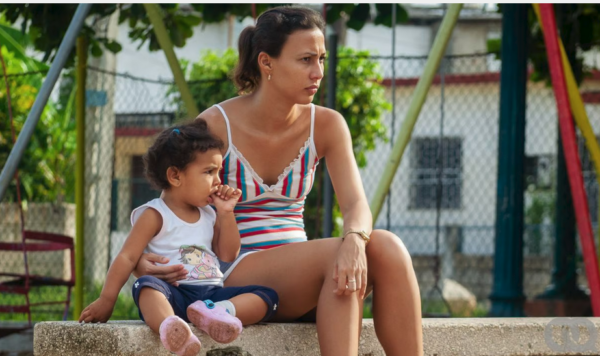Mass Exodus of Cuban Women Is Shaping the Country’s Future

HAVANA TIMES – The current fiscal year has surpassed the record for the last five years in the number of Cuban families arriving in the United States. From October 2023 to July 2024, 65,867 people accompanied by their close relatives arrived from Cuba, according to data from US Customs and Border Protection.
Elaine Acosta, a Cuban researcher at Florida International University (FIU), notes the increased number of women reflects the depth of the systemic crisis that has engulfed Cuban society, a crisis that affects the most basic aspects of life there.
“Despite the dangerous routes and the illegal nature of the current crossings, we’ve observed an equal or greater proportion of women and families in the migration process,” notes the specialist in aging, caregiving, and rights.
The systemic or “policrisis” of Cuba, as Acosta defined it at an FIU discussion, includes a deterioration in overall well-being, generalized impoverishment, and a lack of future perspectives, especially for the youth and their families.
Studies realized by the project that Acosta leads – “New Waves of Migration from Latin America” – revealed that the expectations for study and work of the youngest women are impossible to realize on the island. For that reason, they decide to seek other destinations.
Acosta describes the current phenomenon of Cuban migration as a “tsunami” that is leaving deep marks on the lives of those who leave, as well as on those who remain on the island. One result is that the elderly, who are often dependent on family support, are left unattended in very vulnerable conditions. This also impacts the accelerated aging of the Cuban population, while the loss of the labor force aggravates yet further the challenges the island faces.
Triggers for the recent migratory exodus
In Cuba, the lack of updated public statistics on poverty, or those at risk of poverty, hinders the full comprehension of the economic situation. However, there’s a generalized impoverishment of the population, with salaries and pensions well below the cost of their basic needs. This, in turn, has led to a significant deterioration in the levels of well-being, reflected in diminished scores on the international indicators of human development. Cuba has dropped 32 places on this scale in just 15 years.
“We’re not speaking about incomes, but about access to health, education, social welfare. That was where Cuba almost always came out a champion on the international measurements. Apparently, it is no longer winning that championship, but – on the contrary – has gone significantly backwards,” Acosta observed.
A recent study of the Food Monitor Program noted that in Cuba the indexes of food security, consumption, and stable food access and availability are very low.
The lack of opportunities and political discontent also support the decision to migrate, especially among those who were actively involved in politics and later became victims of repression.
“Previous to the crisis of July 11 [widespread 2021 protests, followed by government repression and mass arrests], many of those who today are migrants had placed their bets on not leaving Cuba, be it because they felt socially committed to something, or felt they had opportunities to form a small business. There was some sense of a project before the pandemic and the social explosion. That project went bankrupt, the moment passed, and now it seems there’s no going back,” the researchers explained.
Other conditions that influence the current context include increased levels of inequality and of internal migration. These factors too have impacted the quality of life, especially for women, older people, and people who are Afro-descendent or mestizo.
In April 2024, the official site Cubadebate affirmed that “from 2014 until September 2023, 3,690 homeless people were identified.”
Nonetheless, an article in the official Cuban news site Victoria indicates that the numbers are increasing. Between 2015 and February 2024, a total of 900 people have been attended in the Center for Attention to Havana’s Homeless People, – which represents 63 cases more than those reported by the Cuban authorities, without even counting the numbers from 2014.
As the social crisis in Cuba deepens, many women have become the protagonists of political and social protests, clamoring for better conditions, which is in itself a highly political act. In the face of the growing repression of these protests, including the imprisonment of many women, migration has arisen as an alternative, a strategy for survival given the generalized crisis,” Acosta asserted.
The difficult perspectives for family reunification means that the decision to migrate is often made as a family. With that in mind, women generally migrate with their children and sometimes with their parents, Elaine Acosta concluded.
First published in Spanish by El Toque and translated and posted in English by Havana Times.





